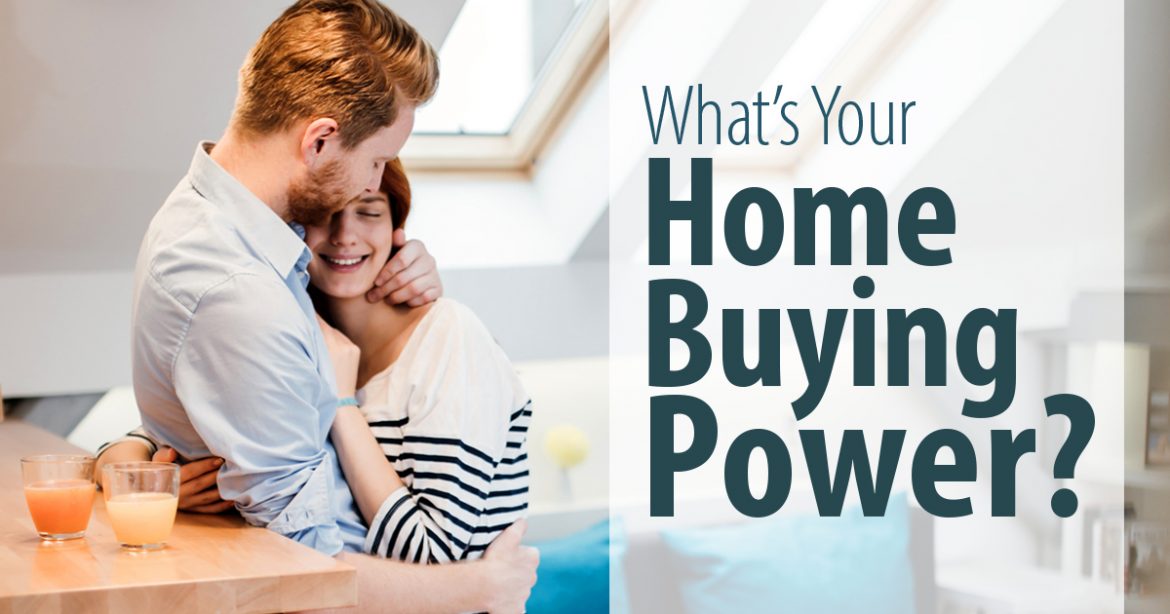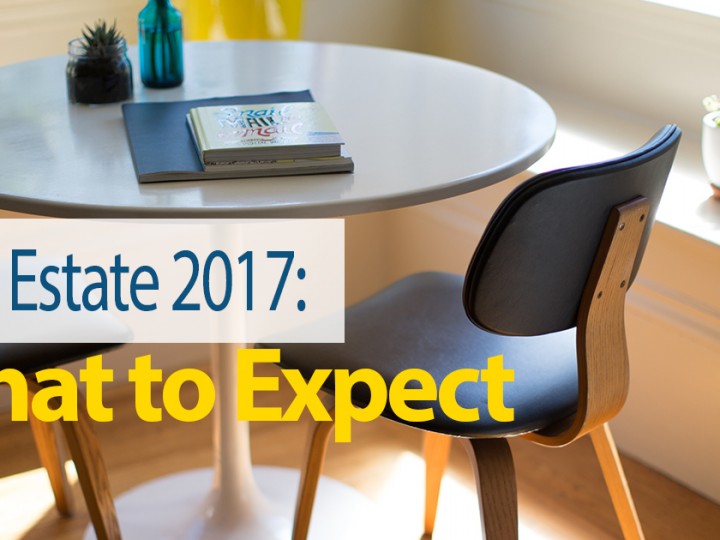
What’s Your Home Buying Power?
If you’re in the market for a new home or investment property, one of the first questions you’ll probably ask is, “What can we afford?” Many buyers become so caught up in how much they can afford that they don’t realize their total buying power—that is, the total amount of purchasing potential they actually have.
Buying Power Defined
Your buying power is comprised of the total amount of money you have available each month for a mortgage payment. This means the money you have each month after fixed bills and expenses. Any money you’ve saved for a down payment, the proceeds from the sale of your current home, if applicable, and the amount of money you’re qualified to borrow all impact your buying power as well. When you take all of this into account, you may find you are able to purchase a larger home or a home in a more desirable neighborhood, or you might realize you should be looking for homes in a lower price range.
What About Housing Affordability?
Housing affordability is a metric used by real estate experts to assess whether or not the average family earning an average wage could qualify for a mortgage on the average home.1 Although this figure is essential to creating a comprehensive overview of the real estate market, it’s not a factor you should consider in your home search. What may be considered affordable to you based on your income and other factors may be different than what’s affordable to the average buyer.
Why Buying Power Matters
A common misunderstanding is that a home’s list price determines whether or not you can purchase it. Although it’s important to look at the price tag, it’s essential to consider what your monthly payment will be if you own the home. After all, the purchase price doesn’t include the housing-related expenses, such as annual property taxes, homeowner insurance, associated monthly fees and any maintenance or repairs. Figuring out the payment will prevent you from overestimating or underestimating your buying power. After all, you’ll live with your monthly payment, not the sales price.
Once you have clarity on your buying power, you’ll be able to buy the home you want, instead of settling for a home because you feel it’s the only one you can afford. It will also prevent you from becoming “house poor,” a common term for someone who’s put all their money toward the down payment, leaving them nothing left over for fees outside of their monthly house payment. Both scenarios can negatively impact the lifestyle you want to live. Understanding your buying power can help you get the home you want without sacrificing the lifestyle you desire.
If you haven’t sold your current home yet, a Comparative Market Assessment (CMA) will give you a general idea of how much you may get for your home based on what other homes have sold for in your area. Contact our team for a FREE CMA!
Calculating Your Buying Power
You might be wondering, “How do I know what my buying power is?” Buying power is calculated by adding the money you’ve saved for a down payment and/or the money you made from selling your home (minus fees and mortgage payoff) to all of your sources of income and investments that could be used to make your monthly payment. Make sure to include your monthly pay, commissions or tips, dividends from investments, payments from rental properties or other monthly income you receive as well as the loan amount you’re willing to finance and qualify for.
Most lenders advised buyers to spend no more than 35 to 45 percent of their pretax income on housing, meaning all your income and sources of revenue prior to paying taxes. Make sure you factor in not only your mortgage payment, but also property tax and home insurance to the cost of housing.2 However, other financial experts advise spending no more than a very conservative 25 percent of your after-tax income on your housing expenses.2 Whether you plan to spend the average, play it conservative or split the difference is up to you.
Traditionally, mortgage lenders have targeted the ideal housing expense amount to be a ratio of 28 percent or less.3
However, these figures bring up an important point: you don’t have to spend all of your savings and available monthly income on a mortgage payment. It’s important to set money aside for regular home maintenance, unexpected repairs and monthly fees, such as a condominium or homeowners association fee. While the above ratios are commonly accepted, a lender will look at your total financial picture when they decide how much they’re willing to lend. It may be tempting to take out a large loan in order to purchase the home of your dreams, but keep in mind the less money you have to borrow, the stronger your buying power may be.
4 Things That Impact Buying Power
- Credit score. A great score can help you lock into a lower interest rate.
- Debt-to-income ratio. The lower the ratio, the better risk you may be to lenders as long as you have an established credit history.
- Assets, including the documentation of where the money for the purchase is coming from and the mix of your investments.
- Down payment. The more you’re able to put down, the less you will have to borrow. With a down payment of 20 percent or more, you won’t have to purchase private mortgage insurance (PMI) and you may also be able to negotiate a lower interest rate.
How to Save for a Down Payment
If you’re thinking of buying a home one day, one of the first steps to take is to start saving for a down payment. Here are some tips to make saving easier.
First-time buyers:
- Set a savings goal. One way to figure out how much to save is to use the average sales price for homes that are similar to what you want and figure out your target down payment percentage. For example, if homes are selling for $200,000 in your area and you want to put 20 percent down, you’ll have to save $40,000. Set a goal to save that amount within a specific time frame; just keep in mind the longer you save, the more the average selling price will change. Although the majority of buyers saved for six months or less, 29 percent of all buyers (and 31 percent of first-time buyers) saved for more than two years for a down payment.4
- Cut back on expenses. Review your monthly expenses and look for ways to save. Twenty-nine percent of buyers cut spending on non-essentials items and 22 percent cut spending on entertainment while they were saving for a home.4 Think about items you can live without or cut back on temporarily while you’re saving.
- Look for ways to boost your income. Get a side job or sell items online or at a garage sale to increase your income in a short amount of time. Be sure to save any windfalls you get, including your annual income tax refund or work bonuses.
- Check out home-buying programs. Your state, county or local government may offer special programs, such as grants, for first-time buyers to use.
- Ask your family. Thirteen percent of all buyers, and 24 percent of first-time buyers, were given money from family or friends to use toward the down payment of their home.4
Repeat buyers:
More than 52 percent of repeat buyers used the proceeds from the sale of their primary residence toward the down payment on their next home.4 Similarly, 76 percent tapped into their savings accounts.4 If you’re thinking of buying another home, here are more ways to save more money, in addition to the tips listed above:
- Rent a room. If you have an income flat (or mother-in-law unit) attached to your home, rent it out and channel the income into a high-interest savings account.
- Make your money work for you. If you don’t plan to buy for at least five years, invest it and let the compound interest work for you. Discuss this option with your financial planner or broker to see if this is ideal for you and your goals.
- Tap into your 401(k). If you have a 401(k) plan, you may be allowed to borrow a portion of it, the lessor of up to $50,000 or half of its value, for your down payment. Remember, it’s a loan so you’ll have to pay it back. If you leave or lose your job before you’ve repaid the loan, you’ll have between 60 to 90 days to repay the balance or face stiff taxes and penalties.
If you want to buy an investment property
Whether you’re buying a second home or a rental property, here are a couple tips to save for a down payment.
- Tap into your equity. If you’ve paid off or paid down your mortgage on your primary home, you may be able to tap into your equity to purchase another property. Contact your lender to learn more about a HELOC or home equity loan.
- Get a partner. Find a friend or relative who’s willing to purchase property with you. Typically, you’ll split the costs and profits equally. Just make sure to work with an attorney to create a partnership agreement to fit your situation.
Work Out Your Buying Potential
What’s your buying potential? Fill out this worksheet to get an estimate.
| Housing Expense Ratio: | |
| 1. Monthly income before taxes | $ |
| 2. Multiply line 1 by 0.28 | X 0.28 |
| 3. Monthly mortgage payment (PITI) should not exceed this amount | = $ |
| 4. Monthly income before taxes | $ |
| 5. Multiply line 4 by 0.36 | X 0.36 |
| 6. Total monthly payments on all debts (including mortgage) should not exceed this amount | = $ |
| 7. Subtract the total monthly payments on all outstanding debts (e.g., car loans, credit cards, student loans, etc.) | – $ |
| 8. The monthly mortgage payment should not exceed this amount | $ |
| 9. Look at line 3 and line 8. The lower figure is an estimate of the maximum mortgage payment in consideration of your income and debts. | $ |
| 10. Multiply line 9 by 0.80 | X 0.80 |
| 11. This equals portion of your mortgage payment that is the principal and interest only | $ |
| 12. Use the table below to see the size of the loan you may be able to obtain with this monthly mortgage payment. | |
Source: Iowa State University Extension, What is your house-buying power?
Monthly Payment on 30-Year Fixed Rate Mortgage
| Loan amount | 3% | 3.5% | 4% | 4.5% | 5% | 5.5% | 6% |
| $50,000 | 211 | 225 | 239 | 253 | 268 | 284 | 300 |
| $75,000 | 316 | 337 | 358 | 380 | 402 | 426 | 450 |
| $100,000 | 421 | 449 | 477 | 506 | 536 | 568 | 600 |
| $150,000 | 632 | 674 | 716 | 759 | 804 | 852 | 900 |
| $200,000 | 842 | 898 | 954 | 1012 | 1072 | 1136 | 1200 |
| $250,000 | 1052 | 1123 | 1193 | 1265 | 1340 | 1420 | 1500 |
| $300,000 | 1263 | 1347 | 1431 | 1518 | 1608 | 1704 | 1800 |
Didn’t see your desired loan amount? Use the table below to estimate your monthly payment (principal and interest) per $1,000 of your loan. To figure out an estimated loan payment, multiply the factor by the number of thousands in the amount of your mortgage.
For example, if you intend to borrow $400,000, with a loan term of 30 years at 4% interest, multiply 4.77x 400 = $1908 per month.
| Interest Rate | 15-Year Term | 30-Year Term |
| Monthly Payment | Monthly Payment | |
| 3% | 6.90 | 4.21 |
| 3.5% | 7.14 | 4.49 |
| 4% | 7.39 | 4.77 |
| 4.5% | 7.64 | 5.06 |
| 5% | 7.90 | 5.36 |
| 5.5% | 8.18 | 5.68 |
| 6% | 8.44 | 6.00 |
Source: HSH.com http://www.hsh.com/mopaytable-print.html)
Don’t forget to factor in property taxes and insurance. These are often added to your principal and interest of your mortgage payment—the money used to pay down the balance of your loan and the charge for borrowing the money. Since these numbers vary, contact your county assessor’s office for the current property tax rate and your insurer for a home insurance quote. Once you have these figures, divide each by 12 to estimate how much they’ll add to the above payment amounts.
Do you want a clearer picture of your buying power? Would you like to see what kind of homes you can get with your buying power? Give us a call!
Sources: 1. National Association of REALTORS https://www.nar.realtor/topics/housing-affordability-index/methodology
- Moneyunder30.com https://www.moneyunder30.com/percentage-income-mortgage-payments
- Credit.com https://www.credit.com/loans/mortgage-questions/how-to-determine-your-monthly-housing-budget/
- National Association of REALTORS, 2016 Profile of Home Buyers and Sellers
- Iowa State University Extension, What is your house-buying power? https://store.extension.iastate.edu/product/pm1460-pdf
- HSH.com http://www.hsh.com/mopaytable-print.html




